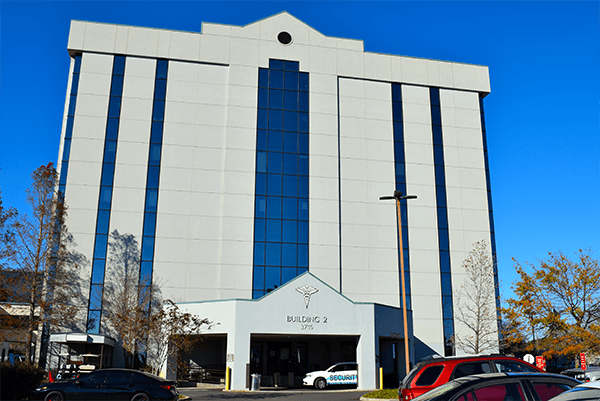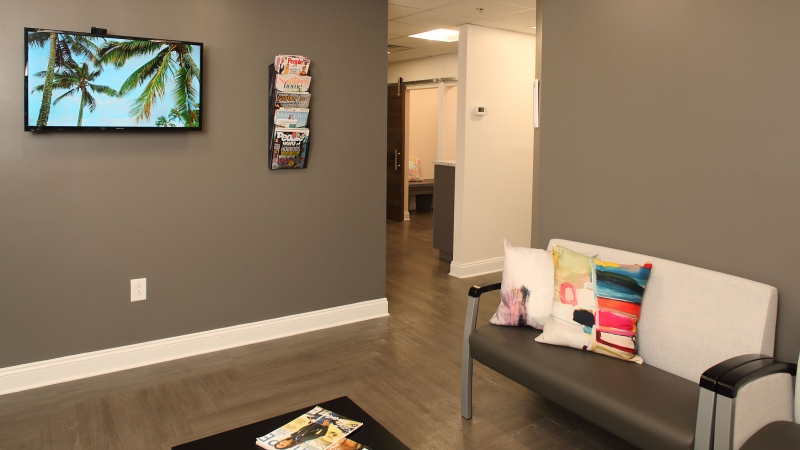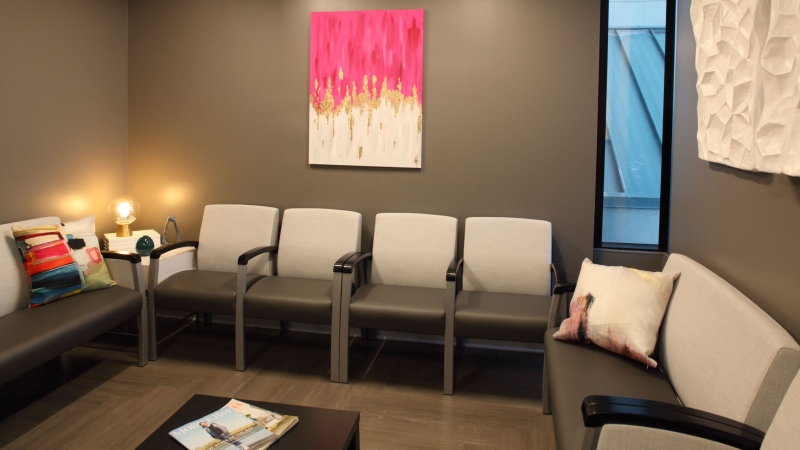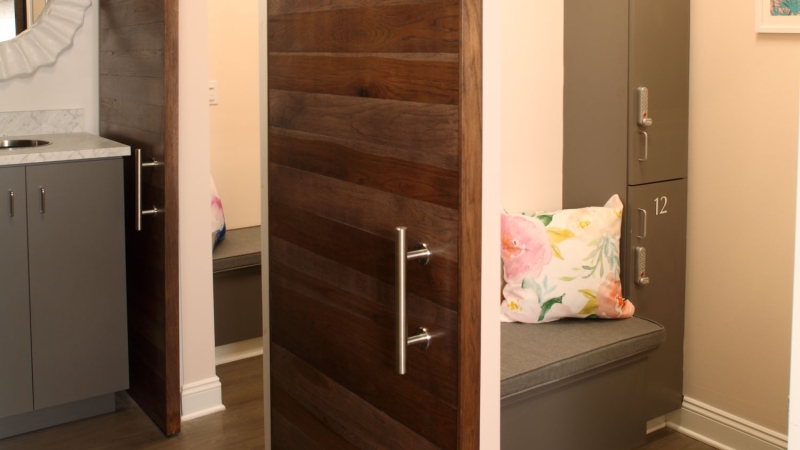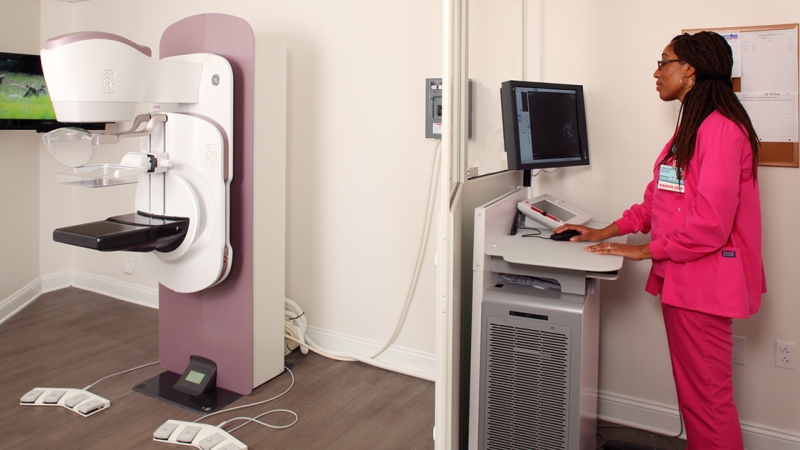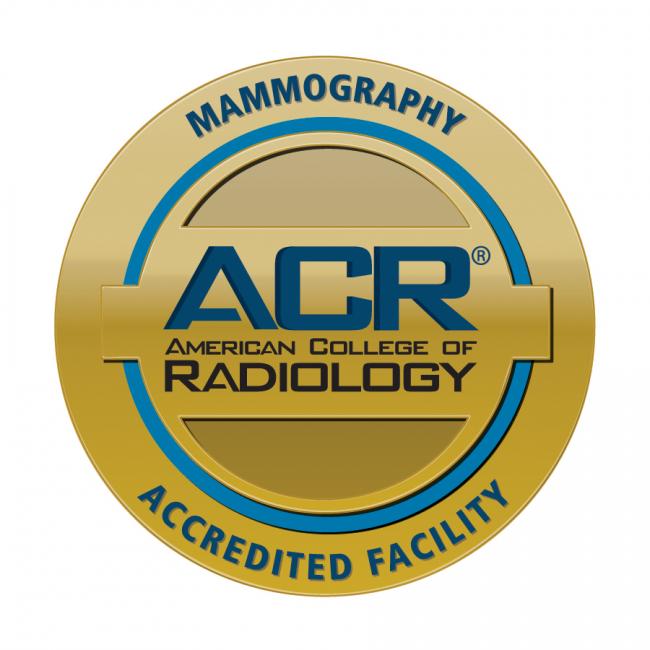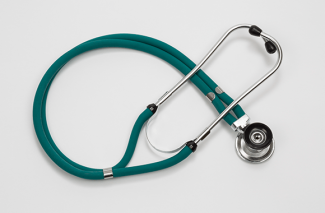Located on the second floor of Medical Office Building 2, Springhill Medical's Women's Diagnostic Center provides important diagnostic testing such as mammography, bone densitometry, and stereotactic breast biopsy all in one easily accessible location.
At Springhill we realize that annual screening mammography is a very important part of your overall health. We want to make your experience as enjoyable and relaxed as possible, so we have created a beautiful spa-like experience in our Women’s Center. With calming colors, beautiful videography, and soft music on our monitors, and warm soft gowns, making you feel comfortable and relaxed is a major focus here. Our professional team of technologists will take great care of you from the start and will be there with you to answer any questions you might have.
Mammography
A mammogram is an x-ray of the breast. The exam uses a computerize x-ray unit that is dedicated to doing only mammography. We do have to use compression, but, when done correctly, it should not be painful. You must be able to stand or sit up in a chair in order to have a mammogram.
For more information about this and all radiology specialties, including information about radiation safety and concerns, please visit RadiologyInfo.org.
Services provided in our Women's Center:
Screening Mammogram
A Screening mammogram is done when a patient has no symptoms present. Views of each breast are taken from two angles. This exam does require compression. Compression is done in order to make the tissue of the breast more uniform so small abnormalities can be seen. Springhill Medical Center follows the American Cancer Society’s recommendation for screening mammography: Annual Screenings begin at age 40 and each year thereafter. This recommendation is based on the duration of time a breast cancer is detectible by mammography before symptoms develop. It is best to find the tumor when it is small and most treatable. Most insurance companies cover screening mammograms at 100% but not all insurance companies will pay for a mammogram each year. You should ask your carrier how they cover mammography – annually or every two years and at what age.
If an abnormality is found on your screening mammogram, you will be asked to return for additional imaging. These exams would be a diagnostic mammogram and/or an ultrasound of the breast.
Diagnostic Mammograms
This exam would be of the area in which the abnormality was seen. Unless there are abnormalities in both breasts this would be a unilateral exam (affected side only). Different views, as well as different compressions, will be completed at this time. There is an additional charge for this exam, and it is not always covered 100% by insurance. This exam would fall under you deductible, and some insurance providers have a co-pay for mammography facilities.
You would also have a diagnostic mammogram if you or your doctor feels a lump or you have unexplained pain in one or both breasts. If you have not had a mammogram in a year, you should have a bilateral exam. If you had a recent mammogram but the findings are new, we would do only one side.
3D/Tomography of the Breast
Springhill also offers the 3D Mammograms, or Tomosynthesis of the Breasts. 3D breast imaging is an advanced technology in the fight against breast cancer that allows doctors to examine your breast tissue one layer at a time. The 3D imaging system uses high-powered computing to convert digital breast images into a stack of very thin layers or “slices” for the radiologist to review.
A good analogy for a 3D mammogram is thinking of pages in a book. If you look down at the cover you cannot see all of the pages – but when you open it up, you can go through the entire book page-by-page to see everything between the covers. 3D mammography was designed with the same concept in mind.
3D breast imaging detects more invasive breast cancers earlier and reduces false positives by up to 40% compared to a conventional mammogram. It is the biggest breakthrough in breast cancer detection in 30 years.
A false positive is when a mammogram shows an abnormal area that looks like a cancer but turns out to be normal. Ultimately, the news is good: no breast cancer. But the suspicious area usually requires follow-up with more than one doctor, extra tests, and extra procedures, including a possible biopsy. There are psychological, physical, and economic costs that come with a false positive. 3D mammography reduces the likelihood of false positives.
Ultrasound of the Breast
Depending on the appearance of the abnormality, the radiologist may request a breast ultrasound. The ultrasound uses sound waves instead of radiation. The ultrasound helps to tell if the lesion is liquid or solid or a mixture of both. This helps physicians decide on the next step. Your insurance will also apply your deductible or facility co-pays to this exam.
Breast Core Biopsy
If an abnormality continues to look suspicious after the above exams, then you will be referred to a surgeon most likely. The next step is usually a breast biopsy. We do biopsies under both mammography and ultrasound depending on which modality the abnormality showed up best. Small samples of tissue are remove with a needle and sent to pathology to be examined for breast cancer.
Bone Density Scan (DEXA Scan)
A bone density scan is to check for loss of calcium in your bones. You lay on a table on your back with yours legs elevated on an angled sponge. The machine will move over you. There will be two scans: a lumbar spine and a hip. The lumbar spine area and the hip are scanned because these are the areas that will become osteoporotic. These are the areas that are the most susceptible to debilitating factures. There are times when we do not have a full schedule, and we will take a walk-in, but it is best to schedule these exams.
Bone Density Scan Preparation
A two-piece outfit with pants or skirt with an elastic waist works well because you will only have to remove your top. If you have metal, like a zipper or buttons in the pants, you will need to pull them down below your hips. You may not have had any x-ray dye such as barium or iodine in the past 2 weeks, or any nuclear medicine exams in the last two weeks. You may take any daily medications.
A bone scan must be scheduled before any barium, iodine, or nuclear medicine studies. If you have these studies first, we will need to wait two weeks before doing the Bone Density exam.
Mammography procedure preparation
For all mammography, you should wear a two-piece outfit, this makes changing easier. You should not wear any powder or lotion around the breast area. You may wear deodorant, but you need to tell the staff so you can remove it before the exam.
Hours of Operation
- Monday: 8 a.m. - 4:30 p.m.
- Tuesday: 8 a.m. - 4:45 p.m.
- Wednesday: 8 a.m. - 4:30 p.m.
- Thursday: 8 a.m. - 4:45 p.m.
- Friday: 8 a.m. - 3 p.m.
We do take walk-ins until 4 p.m. as long as you have a written order (prescription), and you are willing to be worked in between scheduled patients. We attempt to pre-register all scheduled patients 24 to 72 hours prior to an appointment.
For all exams at Springhill Medical Center, you must have a written order from your referring physician.
Location
We are located in the tall building next to the hospital, Building 2. There is a parking lot in the back to the east of the Emergency Department. The entrance facing this parking lot is the front of Building 2. On the map, look for the entrance marked Building 2. Go in this door, and take the first set of elevators to the second floor. Women’s Diagnostic Center is to the right as you step off the elevator.
For printable hospital maps and parking information, look at our Directions and Parking Page.
Contact Us
To schedule an appointment or for any questions or problems, please call 251.460.5258.

